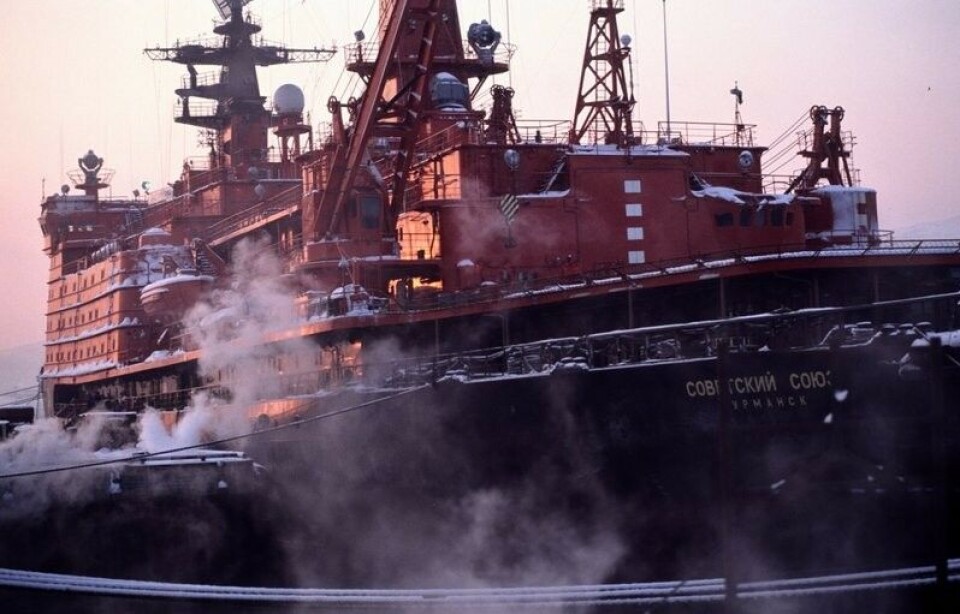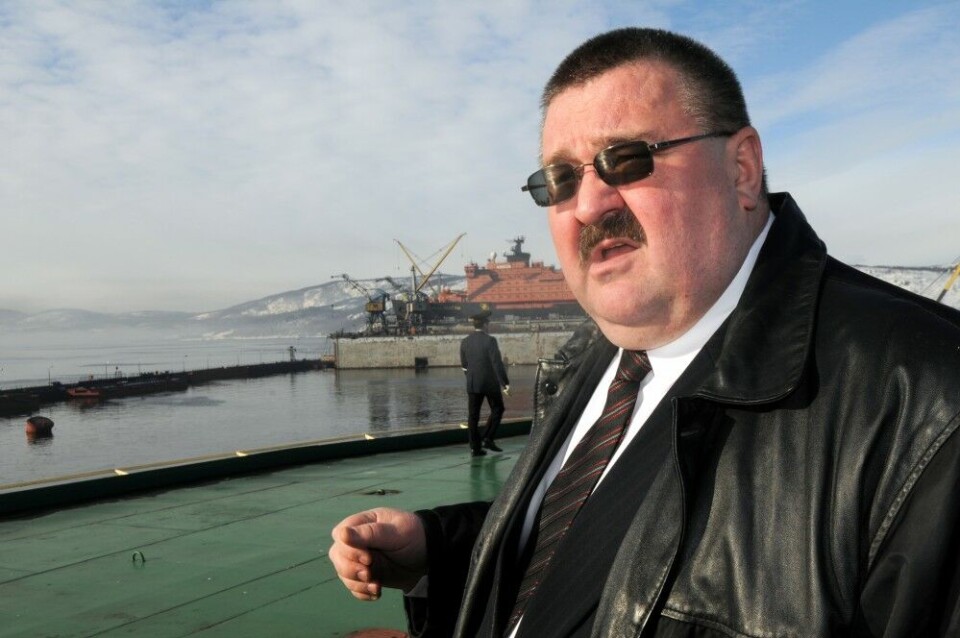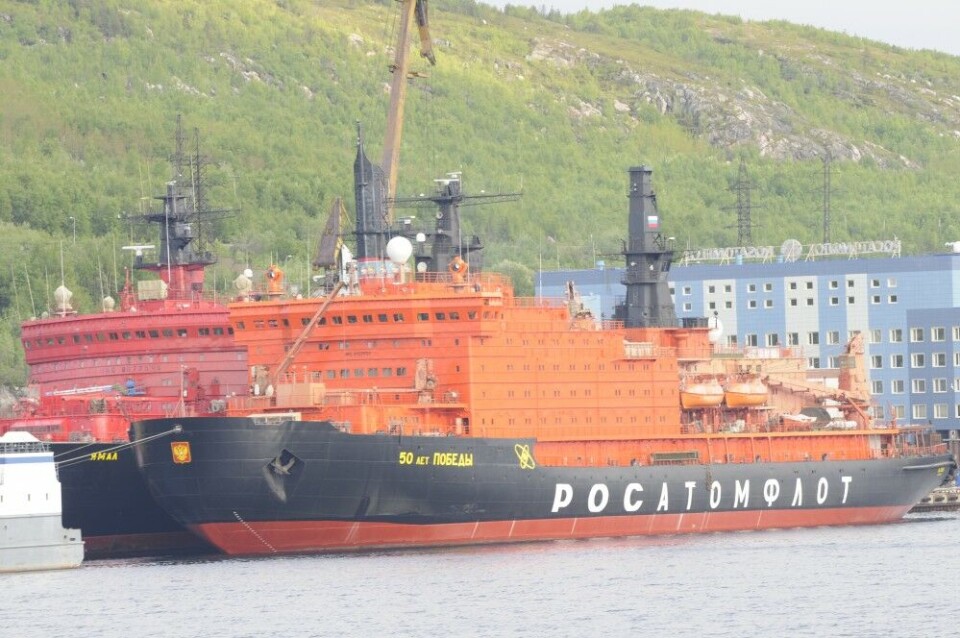
«Soviet Union» will not be converted to Arctic military command post
The order is signed: The nuclear-powered icebreaker «Soviet Union» will be cut up and recycled.
p.p1 {margin: 0.0px 0.0px 0.0px 0.0px; font: 11.0px Helvetica; color: #222222; -webkit-text-stroke: #222222}p.p2 {margin: 0.0px 0.0px 0.0px 0.0px; font: 11.0px Helvetica; color: #222222; -webkit-text-stroke: #222222; min-height: 13.0px}span.s1 {font-kerning: none}
«The icebreaker «Sovyetsky Soyuz» - unfortunately - is decommissioned, the official order is signed,» says Vyacheslav Ruksha, General Director of Rosatomflot to RIA Novosti.
The order means Russia scraps all former plans to convert the icebreaker into a command ship for military operations in the Arctic.
Nearly 30-years old, the giant icebreaker has been laid-up at Atomflot-base in Murmansk since 2006. In January 2016, Rosatom Director Sergey Kiriyenko sent an offer to Defense Minister Sergey Shoigu on reconstructing «Sovyetsky Soyuz» to become a military floating Headquarters able to move over large distances in Arctic waters in relatively short time.
The idea came up after Russia’s Northern Fleet, based on the Kola Peninsula, in December 2014 became responsible for the new Arctic Joint Strategic Command.

Vyasheslav Ruksha now says the idea was «a little bit wrong» and «unfortunately, the icebreaker will be over-capacity. It is not economic advisable.» p.p1 {margin: 0.0px 0.0px 0.0px 0.0px; font: 11.0px Helvetica; color: #222222; -webkit-text-stroke: #222222}span.s1 {font-kerning: none}Later this fall, the military Northern Fleet will get its own icebreaker, the «Ilya Muromets» to be based in Severomorsk.
Another idea was to restore the icebreaker and use it for offshore oil- and gas projects. But, according to Ruksha, western sanctions ended those projects. He points to the joint oil-drilling by Rosneft and ExxonMobile in the Kara Sea, a project put on halt in late 2014 because the U.S. and European sanctions forbid western involvement in Russian Arctic offshore oil exploration.
This is also the arguments Rosatomflot points to when explaining on its Facebook-profile why the icebreaker now will end up as scrap-metal.
p.p1 {margin: 0.0px 0.0px 0.0px 0.0px; font: 11.0px Helvetica; color: #222222; -webkit-text-stroke: #222222}span.s1 {font-kerning: none; color: #000000; -webkit-text-stroke: 0px #000000}span.s2 {font-kerning: none}
«… the Western countries imposed sanctions against Russia in response to the annexation of Crimea. As a result, the joint project of Rosneft and the US ExxonMobil on development of the Kara Sea shelf was curtailed, and «Sovyetsky Soyuz» remained out of work,» the text reads.
Upgrades to no avail
p.p1 {margin: 0.0px 0.0px 14.0px 0.0px; line-height: 16.0px; font: 14.0px Helvetica; color: #333333; -webkit-text-stroke: #333333}span.s1 {font-kerning: none}
Some modernization work has been done on board in the period from 2014 till now with the plan to relaunch the icebreaker for new voyages from 2018. Upgrades of the reactor facilities could prolong the vessel’s life-time with another 20 years according to Rosatomflot.
Now, all further plans are once and forever disapproved.
«Sovyetsky Soyuz» started to sail in 1990 and was together with «Sibir» the first nuclear-powered icebreakers to sail on a commercial voyage to the North Pole with tourists.

The ship has two reactors generating 171 MW each and providing some 75,000 hp to the three propellers. With a crew of up to 200 persons, the vessel could be at sea for months at a time, crushing the ice along the Northern Sea Route from the Kara Sea to east of the Wrangler Island.
From before, two other icebreakers of the same class, «Sibir» and «Arktika» have been decommissioned and are ready for scrapping. Decommissioning work will take place at the Nerpa shipyard and the still-radioactive reactor compartments are to be taken onshore at the long-term storage in Saida Bay. p.p1 {margin: 0.0px 0.0px 0.0px 0.0px; font: 11.0px Helvetica; color: #222222; -webkit-text-stroke: #222222}span.s1 {font-kerning: none}
«Sibir» was towed to the Nerpa-yard last autumn after being laid-up at Atomflot since 1992.
With «Sovyetsky Soyuz» now written off, there are only two vessels of the Arktika-class still in operation, «Yamal» and «50 Let Pobedy».
A new class of icebreakers will within some few years replace the older vessels of the Arktika-class. Three vessels of the new LK-60 class icebreakers are currently under construction at the Baltic Yard in St. Petersburg. The icebreakers will be even larger than the Arktika-class, said to be able to break trough three meter thick ice.The two first vessels of the class will like the older, now decommissioned, icebreakers be named «Arktika» and «Sibir». The third is named «Ural» - a name initially also supposed to given to the «50 Let Pobedy».
The new «Arktika» will according to the plans start sailing in May 2019.
















